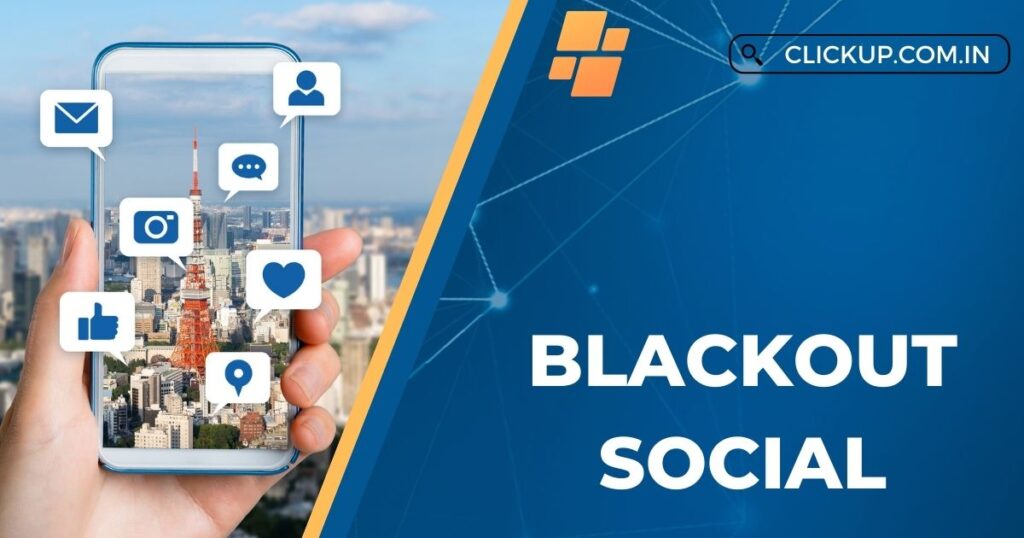In the ever-evolving world of social media, terms and practices often emerge that challenge traditional norms. One such term gaining attention is blackout social. Though seemingly straightforward, it embodies a complex interaction between digital disconnection and modern communication. This article explores the meaning, implications, and relevance of blackout s0cial in today’s hyperconnected world.
What Is Blackout Social?
At its core, blackout social refers to a deliberate decision to step away from social media platforms for a specified period or entirely. This “blackout” can be a response to digital fatigue, an attempt to reclaim privacy, or a form of protest against certain online behaviors or platforms.
The Origins of Blackout Social
The rise of blackout s0cial is linked to increasing awareness of the negative effects of constant connectivity. It stems from the growing need to prioritize mental well-being and rediscover real-world interactions.
Why People Choose Blackout Social
Several reasons drive individuals to embrace blackout s0cial:
Mental Health Benefits: Reducing exposure to negative content and pressure.
Digital Detox: Breaking free from the addictive nature of social media.
Privacy Concerns: Protecting personal information from data misuse.
Protest or Awareness: Sending a message by stepping away.
The Psychological Impact of Blackout Social
Taking a break from social media has significant psychological benefits:
Reduced Anxiety: Eliminating the need to keep up with constant updates.
Improved Focus: Gaining clarity and productivity by reducing distractions.
Enhanced Relationships: Reconnecting with loved ones without digital interference.
How Blackout Social Affects Social Media Culture
When individuals or groups participate in blackout s0cial, it creates a ripple effect:
Increased Awareness: Highlighting issues like online harassment or algorithmic biases.
Platform Accountability: Pressuring social media companies to prioritize user well-being.
Shift in Content Consumption: Encouraging users to seek healthier online habits.
Challenges of Blackout Social
While blackout s0cial has its merits, it also comes with challenges:
FOMO (Fear of Missing Out): Many worry about losing touch with trends or updates.
Professional Dependencies: Those who rely on social media for work face difficulties stepping away.
Reintegration: Returning after a blackout can feel overwhelming.
Tips for Implementing Blackout Social Successfully
Set Clear Goals
Define your purpose for the blackout. Are you prioritizing mental health, protesting, or simply taking a break?
Plan the Duration
Determine how long you’ll stay offline. It could range from a single day to several months.
Inform Close Contacts
Let friends, family, or colleagues know about your decision to avoid misunderstandings.
Replace the Habit
Fill the time with meaningful activities like reading, exercising, or engaging in hobbies.
Reflect and Reassess
After the blackout, evaluate how it impacted your well-being and decide whether to make it a regular practice.
Blackout Social in the Context of Social Movements
Blackout s0cial has also been used as a collective tool for advocacy:
Protests Against Injustice: Activists use digital blackouts to draw attention to causes.
Platform Boycotts: Organized social media silence pressures companies to implement changes.
The Role of Blackout Social in Professional Spaces
In the professional realm, blackout s0cial presents both opportunities and challenges:
Digital Fatigue in the Workplace: Employees benefit from reduced screen time.
Risks for Entrepreneurs: Social media is crucial for branding and marketing.
The Long-Term Benefits of Blackout Social
Over time, practicing blackout s0cial can lead to:
Greater Self-Awareness: Understanding personal limits and boundaries.
Balanced Tech Usage: Developing a healthier relationship with digital devices.
Stronger Offline Connections: Building more meaningful interactions in real life.
Blackout Social vs. Digital Detox
While the terms are often used interchangeably, there are subtle differences:
Blackout S0cial: Specifically involves disengaging from social media platforms.
Digital Detox: Encompasses a broader disconnection from all digital devices.
Criticism and Controversies Around Blackout Social
Not everyone views blackout s0cial positively. Critics argue:
Ineffectiveness: Brief blackouts might not address systemic issues in social media.
Privilege: Only those with the means to step away can afford to do so.
Temporary Impact: Without sustained efforts, the benefits may be short-lived.
Balancing Connectivity and Disconnection
The goal of blackout s0cial isn’t to abandon technology but to find balance:
Mindful Engagement: Use social media purposefully rather than passively.
Time Limits: Set boundaries for daily usage to avoid overindulgence.
Digital-Free Zones: Create spaces or times where devices are off-limits.
Conclusion
Blackout s0cial is more than just a trend; it’s a powerful tool for self-care, advocacy, and recalibration in an increasingly digital world. By stepping back from the noise, individuals can rediscover clarity, connection, and purpose. Whether for personal well-being or social change, blackout s0cial offers an opportunity to rethink our relationship with technology.
FAQs
What is blackout social?
It’s the intentional act of taking a break from social media to improve well-being, raise awareness, or protest certain issues.
How long should a blackout s0cial last?
The duration depends on personal goals. It can range from a single day to several weeks or months.
Can businesses participate in blackout social?
Yes, companies may use blackout s0cial to raise awareness for causes or promote digital wellness among employees.
Is blackout s0cial effective for mental health?
Yes, it reduces anxiety, improves focus, and fosters mindfulness by minimizing digital distractions.
How can I start a blackout s0cial?
Set clear goals, inform close contacts, replace the habit with meaningful activities, and reflect on the experience afterward.







